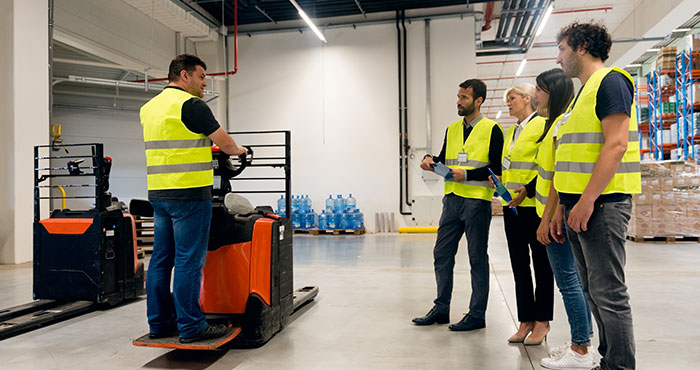

Having attended numerous company inductions over the years, I’ve been able to experience an array of company inductions, some good, some average and others… not so good. It’s actually been quite a journey of discovery.
When I think about company inductions, I cast my mind back, and there are 3 that I have attended that spring to mind. Sadly, the ones I remember distinctly, are the most forgettable ones.
Let’s call them Induction A, B and C.
Induction A … featured one of the workers off the floor who handed the three of us that were present (2 subcontractors and myself, a visitor) an A4 page of health and safety information and proceeded to read each and every word on that page to us.
Induction B was a tick and flick exercise, again, I completed it as a visitor only, but this time by myself. I watched with interest and bemusement as the person charged with delivering the induction, completed most of the ticking and flicking himself without ever asking me a question. I found it a bit bewildering that this employee had asked me to complete the sections on confined space, hazardous substances, and working at heights when I was only there to meet two of the company executives in the boardroom.
Then there was Induction C, a 60 minute, extremely wordy, PowerPoint induction delivered by one of the supervisors who proceeded to repeat every one of the several thousand words appearing on the PowerPoint. It became apparent that the content of this presentation was aimed at the various subcontractors and future workers in the room, and had little to no relevance to me, the visitor. My requirements were not much more than the importance of staying with my contact during the visit, sticking to walkways, looking out for hazards in the workplace, and knowing what to do in an emergency.
I sit here now and wonder just how much those inductions actually contributed to the health and safety of each workplace and the workers within those workplaces.
Here are my take-aways :
1. Know Your Audience
Firstly, it is clear to me the importance of formulating an induction program with the three different types of audience very much in mind. The employee, the sub-contractor and the visitor and tailoring 3 different inductions for each of those audiences.
It doesn’t necessarily mean producing three separate induction programs. One large induction program can be packaged up in three different ways to suit the target audience. Whether you put together an induction program in-house, or engage the services of a producer or supplier of training and induction content, working with modules of different topics can help with this.

2. Engage With Picture
They say a picture paints a thousand words, yet none of these inductions utilised the power of the picture. Even a few photos within the PowerPoint might have had me and the rest of the audience sit up and take a bit more notice.
Utilising video content can help communicate the important messages succinctly and clearly. It can also evoke emotion where necessary to engage the learner, and can provide that consistency of message. The beauty of video based induction programs, is that the video content can be broken up into small modules for either toolbox talks or ongoing training down the track. Surprisingly, video based inductions are also relatively inexpensive.
3. Facilitate With Enthusiasm
The inductions also highlighted that the performance of the person delivering the induction is a critical factor. It was obvious that each of the three presenters above had delivered hundreds of inductions but not because of their expertise or slickness but by their lack of enthusiasm. No doubt this would have contributed to a lack of engagement by the learners, and ultimately impacting on the effectiveness of the induction itself.

We all know the value of the first impression and that inductions are often the very first impression a worker gets to make about their new employer.
If you have read this far, perhaps now is a good time to think about the quality and effectiveness of your inductions. Good luck!

